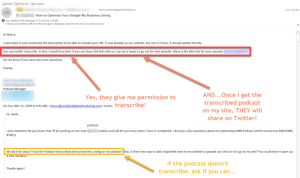— June 19, 2018
Digital marketing mistakes are some of the easiest to fix once you recognize what you’re doing wrong. The nature of this space invites ongoing reflection, analysis, and redirection. So don’t take this list as an indictment of your skills as a digital marketer. Instead, embrace opportunities to level up and make a bigger impact.

We like to think of digital marketing mistakes as natural steps in an agile marketing strategy. There are too many variables involved to ever have a clear path right off the bat. (And that would be so boring.) Embrace your errors, your oversights, your mishaps. They’re part of growing your business, and growing not only as a marketer but as a person.
But that’s enough sentiment. Let’s dig into what you’re screwing up, so you can course correct.
Mistake #1: You don’t know what you want people to feel
You’ve put in enough groundwork to know what you’re offering and the value it provides to your audience, but that isn’t enough to craft a solid message or a campaign rooted in authenticity. Go a step further and identify how you want your product and your messaging to make people feel.
- Nike makes people feel inspired to do more.
- AirBnb makes people crave new experiences.
- La Croix makes people feel like they’re in on a secret.
- Axe makes people feel confident. (Sadly.)
Your brand is the emotional connection people have to what your offer. If you’re marketing without defining your brand and your key brand elements, you’re not going to connect to your consumers.
Gather your key stakeholders and dig in. Don’t be surprised if the results of a serious conversation — or better yet, a brand workshop — lead you toward new messaging and an updated look and feel. It’s more work, but it’s the right work to do.
Tip: Long meeting? Include snacks and games. It worked in kindergarten, and it works with grownups.
Make it a goal to create a brand messaging guide by the end of the year. This should cover your positioning statement and mission, and it should also address the emotional elements of how your customers relate to and connect to your business.
Mistake #2: You’re not listening
Some business owners make the mistake of hiding their heads in the sand when it comes to feedback and conversations about their brand. This is a relatable behavior. We can all remember overhearing classmates saying something shitty in sixth grade. (Or was that just me?)
Banish your baggage (or your laziness, if that’s the case), and set up regular social listening workflows. This can be accomplished through Google Alerts, through your marketing automation software, and directly in the platforms where people are talking about you. Social listening applies not only to conversations happening in real time, but to reviews and comments related to your business.
Tip: Assign someone to this task instead of leaving it up to whoever feels like it at any given time.
Don’t make assumptions about what people are saying about you, good or bad. You should not only set out to spy on your existing customers and potential customers, but you should reach out directly on an ongoing basis to solicit meaningful feedback on your offerings, your service, your website, and even your marketing.
Mistake #3: You’re not doing anything with feedback you get
Feedback doesn’t exist in a vacuum. When a good review makes you smile, don’t stop there. Identify what went right and how you can replicate it.
Bad feedback is even better for business. Someone has done the hard work to identify where your promises were broken and your processes fell apart. Accept that feedback graciously and identify how you can solve for the problem a bad review identified. Do not get defensive and freak out about a bad review in a public place. Offer your gratitude for being alerted to the problem.
Tip: Politely solicit reviews. It’s a little uncomfortable, but it works. Make sure your customers know their feedback helps others like them.
Take reviews, social listening, and the results of customer surveys and create action items. Your action items should be both operational (improving service, switching up your product offerings) and strategic (marketing around a different pain point, engaging in an ongoing conversation). This is not an exact science, so plan for enough resources to not only to stay on top of feedback and make sure that something happens once you gather it, but to continue analyzing the results of your efforts.
Mistake #4: You’re trusting your gut
When it comes to planning a summer vacation, trust your gut. You know better than anyone else whether or not you want your toes in the sand or your hiking boots on the trail. When it comes to your digital marketing performance, trust the numbers. And if the numbers aren’t clear, test your theories instead of letting your instincts break the tie.
When it comes to your digital marketing performance, trust the numbers.
Analytical thinking doesn’t come naturally to everyone, and it may not come naturally at all to creatives who rely on their instincts. Fortunately, marketing automation software and website analytics make it easier than ever to take a hard look at the performance of every single piece of your marketing strategy.
From A/B testing subject lines to creating content around a long-tail keyword, every step you take should be measurable and well-researched. Easier said than done. So put the right mix of thinking (and thinkers) into your digital marketing strategy. Bring creatives, bring storytellers, and bring the numbers — or you’ll end up going down the wrong path because something felt right.
Tip: Use tools like Databox to visualize data and share it with everyone on your team, so that everyone understands your goals and how you measure success.
The best part of paying attention to your performance and setting SMART goals is that you can quickly identify what’s working and double down on it, leading to easier and bigger wins in the future.
Digital & Social Articles on Business 2 Community
(83)
Report Post






